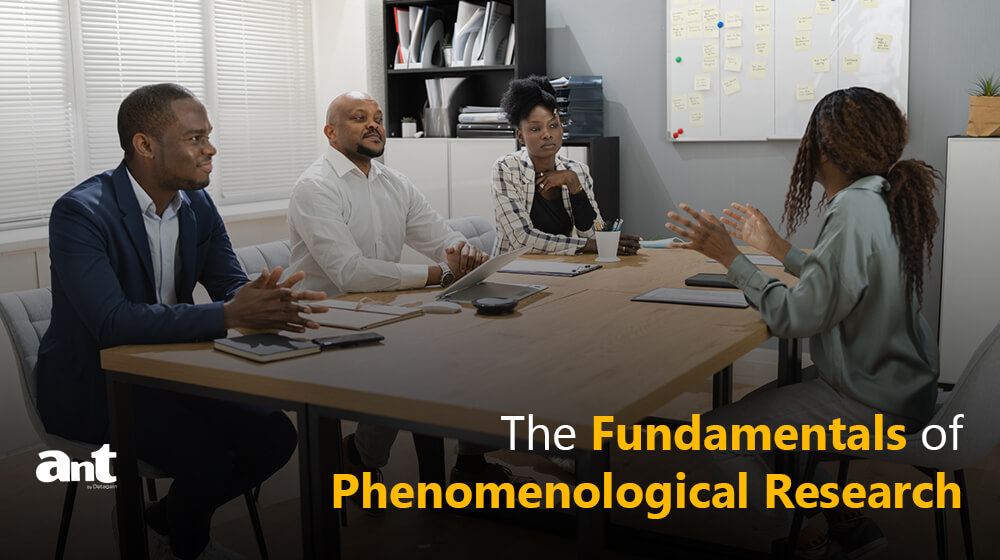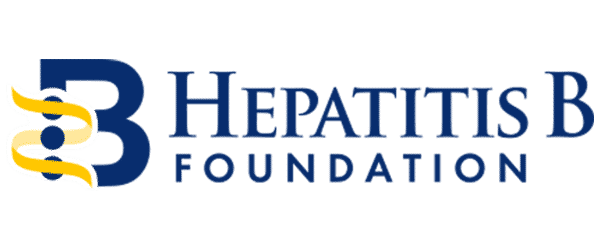
Home » Transcript Library » The Fundamentals of Phenomenological Research
The Fundamentals of Phenomenological Research
00:00:02
MEDEL CABALSA
Hi, everyone. I’m Medel Cabalsa, and let’s start the Fundamentals of Phenomenological Research. Here are the following objectives: Define the phenomenological research.
Determine the origin of phenomenological research. State the purpose of phenomenological approach. Identify the process of phenomenological methods. And explain characterization of types of experience.
00:00:31
Let’s first define what is phenomenological research. According to Marshall & Rossman, it is a process of learning and constructing the meaning of human experience through intensive dialogue with persons who are living the experience.
00:00:48
It rests on assumption that there is a structure and essence to shared experience that can be narrated. Learning and constructing the meaning of experience through intensive dialogue.
Remember that in the human experience, these normally translates into gathering deep informations and perceptions through inductive, qualitative methods, such as interviews, discussions, participant observations, and representing it from perspective of the research participant.
00:01:23
Let’s have another one. Phenomenological studies usually incorporate data about the lived space, or spatiality; lived body or corporeality; lived time or temporality; and lived human relations or relationality.
Phenomenology is the study of structure of consciousness as lived experience from the first person point of view. Central structure but experience is its intentionality. It’s being directed toward something as it is an experience of or about some object.
00:02:03
An experience is directed toward an object by virtue of its content or meaning, which represents the object, together with appropriate enabling conditions.
00:02:16
Pure phenomenological research, however, according to Husserl, 1970, seeks essentially to describe rather than explain, and to start from a perspective free from hypotheses or preconceptions.
00:02:31
It is concerned with the study of experience from the perspective of the individual bracketing taken for granted assumptions and usual ways of perceiving.
Systemologically, phenomenological approaches are based in a paradigm of personal knowledge and subjectivity, and emphasize the importance of personal perspective and interpretation.
As such, they are powerful for understanding subjective experience, getting insights into people’s motivations and actions, and cutting through the clutter of taking for granted assumptions and conventional knowledge.
00:03:11
Next, we do have the origin of phenomenology. The word phenomenology meant the theory of appearances fundamental to empirical knowledge, especially sensory appearances.
The Latin “Phenomenologia” was introduced by Christoph Friedrich Oetinger in 1736. In 18 07, G. Hegel wrote a book titled Phanomenologie des Geistes, usually translated as Phenomenology of Spirit.
00:03:46
By 1889, however, Franz Brentano used the term to characterize what he called “descriptive psychology.”
00:04:00
From there, Edmund Husserl took up the term for his new science of consciousness, and the rest is history.
00:04:11
Let’s have the purpose of phenomenology. That is, one, to illuminate the specific, to identify phenomena through how they are perceived by the actors in a situation.
00:04:24
Remember that this study tackles the lived experiences of an individual or the actors, participant in the study.
00:04:36
Two, the researcher’s goal is to understand the meaning of the experience as it is lived by the participant. On phenomenological research, meaning is pursued through a dialogic process from the participants, which extends beyond simple interview and require thoughtful presence on the part of the researcher.
Using vivid and detailed attentiveness to description, the researcher explores the way knowledge comes into being. They seek to understand knowledge that is based on insights rather than objective characteristic.
00:05:21
Phenomenological research are effective at bringing to the fore the experiences and perceptions of individuals from their own perspectives, and therefore at challenging structural or normative assumptions.
00:05:41
Dordrecht & Boston enumerated the seven types of phenomenological research. And that number 1 is the transcendental constitutive, which studies how object are constituted in peer transcendental setting, consciousness, aside questions of any relations to the natural world around us.
00:06:06
Or naturalistic constitutive, however, tackles how consciousness constitutes or take things in the world or of nature, assuming with the natural attitude that consciousness is part of nature.
00:06:23
Existential. It tackles solely on concrete human existence, including our experience of free choice or actions in concrete situation.
00:06:36
While generative historicist deals with how meaning is found in the work experience is generated in historical process or collective experience over time.
00:06:53
Well, in genetic, it studies genesis of meanings of things within one’s own stream of experience.
00:07:02
And for hermeneutical, interpretative structures experience, and this is how we understand and engage things around us in our human world, including ourselves and others. And the last one, which is realistic, studies structure of consciousness and intentionality, assuming it occurs in a real world that is largely external to consciousness and not somehow brought into being by consciousness.
00:07:41
Let’s tackle the process on phenomenological research. Number 1 is through identifying the phenomena, because the focus of phenomenological research is the lived experience, the researcher is likely to choose this method when studying some dimensions of day-to-day existence for a particular group of people.
00:08:04
It can be single-case studies or a multiple-participant research.
00:08:30
How we do the structuring of the study?
00:08:37
The methods shapes the way we think about the phenomenon of interest and the way we would go about answering a research questions. To describe structuring, the following topics are addressed: And this structuring consists of the research question, researcher’s perspective, and sample selection.
00:09:01
Let’s start with the research question. On research question, the questions that guides phenomenological research always ask about some human experience. It guides the researcher to ask the participant about some past or present experience. In most cases, the research question is not exactly the same as the questions used to initiate dialogue with the study participants.
In fact, the research questions and the interview questions are very similar. However, the difference is important.
00:09:39
Here are the good example of these research questions from the study of Shuemann, The Phenomenological Study into How Students Experience and Understand the University presidency.
00:09:51
Example, how do students experience and understand the university presidency? And second one is, how does this experience and understanding of the university presidency inform or shape the college experience for the students?
00:10:11
One good example also is on the study of Moules and Colleagues about grandparents’ experience of childhood cancer state, that objective of study was to understand from the perspective of the grandparents the complexity and unique character of the experience of having a grandchild diagnosed, treated, and living with childhood cancer.
Their ultimate goal was to guide the initiation of a network of support to the illness of the three generation, the family members who are touched by cancer, as they care for their own children — parents of the childhood cancer while loving, grieving, and worrying for their grandchildren.
00:11:02
Aside from the research questions, we do have the researcher’s perspective.
00:11:08
When using the phenomenological method, the researcher’s perspective is bracketed. Bracketed, which means that the researcher identifies their own personal biases about the phenomenon of interest to clarify how personal experience and beliefs may color what is heard and reported.
00:11:37
This process help me obtain, analyze, and describe data to accurately represent the first-person students’ point of view.
00:11:51
But on the other hand, this bracketing helps to promote accuracy in emerging representations of phenomena, which on the discussion we will see how bracketing is.
00:12:14
Further, the phenomenological researcher is expected to set aside their personal biases, to bracket them, when engaged with the participants.
00:12:22
And by becoming aware of personal biases, the researcher is more likely to be able to pursue issues of importance as introduced by the participant, rather than leading the participant to issues the researcher deems important. That is for Richards & Morse.
00:12:39
And the last one for structuring is the sample selection. The participants were selected purposively and that members of the sample either are living the experience the researcher studies or have lived the experience in their past.
00:13:00
For phenomenologist, it is a matter of asking the right questions and listening.
00:13:10
How about gathering data? Are there different methods to use? Yes. There are several written or oral data maybe collected, and the variety of methods, like interviews, conversation, participant observation, action research, focus meetings, and analysis of personal text.
00:13:34
To some extent, particular data collection procedure is guided by the choice of specific analysis technique.
00:13:45
A concept known as data saturation usually guides decision regarding how many interviews are enough.
00:14:01
Data saturation is the situation of obtaining the full range of themes from the participants, so that in interviewing additional participants, no new data are emerging. Marshall & Rossman.
00:14:23
According to Boyd, data saturation suggests research can typically be attained with 2 to 10 participants.
00:14:30
However, for Creswell, recommends a phenomenological study involve “long interviews with up to 10 people.
00:14:39
And for McNabb, researchers in qualitative design seek interpretive information from a participant sample as small as one individual and up to everyone within the organization, which means it can be more than one participant who experience the live subjectivities regarding the topics or the research problem.
00:15:18
Let’s have data analysis. Several techniques are available for data analysis when using the phenomenological research. There is a general pattern of moving from the participants description to the researcher synthesis of all participants’ description.
00:15:35
Let me note on Colaizzi (1978) 7 series of steps on data analysis. For him, there is seven steps in data analysis.
[00:15:45
The first one is to read the participants’ narratives to acquire a feeling for their ideas in order to understand them fully.
00:15:54
Extract significant statements to identify keywords and sentences relating to the phenomenon under study.
00:16:02
And formulate meanings for each of these significant statements.
00:16:07
Repeat this process across participants’ stories and cluster recurrent meaningful things. Validate these themes by returning to the informants to check interpretation.
00:16:19
Integrate the resulting themes into a rich description of the phenomenon under study.
00:16:25
Reduce these themes to an essential structure that offers an explanation of behavior.
00:16:33
And the last one is return to the participants to conduct further interview or elicit their opinion on the analysis in order to crosscheck interpretation.
00:16:47
Let’s have the two methods used in data analysis.
00:16:53
Where the data is fairly disorganized – interview transcripts, unstructured notes or personal texts – The first stage is to read through and get a feel for what is being said, identifying key themes and issues in each text.
00:17:09
In a small-scale project looking for — I’m sorry. These points – from all the texts for a small-scale project or a sample of different ones where there are more than 15-20 – can then be aggregated and organized with the aid of a mind-map or set of post it notes.
00:17:28
In a small-scale project looking across themes between participants is likely to be easy to do with physical documents, but an alternative useful where there are larger numbers of participants is to enter the data into a database according to the analysis headings, and use a mail merge facility to extract and compare entries.
00:17:57
Moules and his colleagues on his study did not cite a reference for data analysis, however, they do describe their methodology as having entered the hermeneutic circle as an engaged participants.
00:18:11
When we say hermeneutic circle, generative recursion between the whole and part; and immersion into a dynamic and evolving interactions with data both as a whole and in a part through extensive readings and re-readings, reflection, dialogue, and by challenging assumptions, all of which help the researcher move toward an understanding that open up new possibilities.
00:18:43
Hermeneutic circle is the one that you usually go back and forth just to interpret solely lived experiences, a ways of interpreting, understanding something by moving back and forth from specific to specific, then again, reported specific to general, specific to general.
00:19:10
There are some typical experience one might have everyday life. So I made this some of the experiences that you’ll be able to determine the life experiences and its content.
00:19:26
First one, I see that fishing boat off the coast as dusk descends over the Pacific.
00:19:33
I hear that helicopter whirring overhead as it approaches the hospital.
00:19:37
I am thinking that phenomenology differs from psychology.
00:19:41
I wish that warm rain from Mexico were falling like last week.
00:19:47
I imagine a fearsome creature like that in my nightmare.
00:19:51
And I intend to finish my writing by noon.
00:19:55
Here are the rudimentary characterization of some familiar types of experience. Each sentence, as you can see, is simple form of phenomenological description articulating everyday type of experience.
00:20:11
So describe the term, as you can see in the first part, you see the subject term “I,” which indicates the first person in structure of the experience.
00:20:21
The intentionality proceeds from subject. The verb indicates after the “I” type of intentional activity described, which is the perceptions, thought, imaginations.
00:20:33
And of central importance is the way that objects of awareness are presented in or intended in our experiences, especially the way we see or conceive or think about objects.
00:20:47
A direct object expression, as you see in the first part, that fishing boat off the coast articulates the mode of presentation of the object in the experience and the content or meaning of the experience, the quirk — what Husserl has called noema, and in fact, the object phrase expresses the noema on the act describe that is to the extended language’s appropriate expressive power.
00:21:13
The overall form of the given sentence articulates the basic form of intentionality in the experience. On the experience itself, it contains the subject, the act, the content, and the object, like the I, which is the subject, act which is see, then content object fishing boat off the coast as dusk descends over the Pacific. And that’s how we do characterization on the type of experience.
00:21:49
Last part is describing the findings. When reading report of a phenomenological study, the reader should find that detailed descriptive language is used to convey the complex meaning of the lived experience that offers the evidence for this qualitative method.
00:22:09
And for that, Moules & Colleagues in their study listed interpretive findings. Their study actually with regards to the grandparents’ experience on childhood cancer, with childhood cancer are. And for interpretive findings, he found the following:
00:22:34
Speed at which your life changes. The phone call that heralds a shaking of a universe. Out of sync, unfair and trading places. A knowing silence.
00:22:47
Lives on hold while a view of the world changes: holding one’s breath. The quest for normalcy: A new kind of normal. Helplessness: Nothing you can do. Criticism, blame, and guilt. Grandparents needs. The reemergence of sibling rivalry in adults. Pride of their, children.
00:23:09
And the respondents also gave advice as grandparents to the other grandparents, which are:
00:23:14]
Pay attention to the whole world. Be prepared for the ride. Keep perspective and take care of yourself so that you do not become a burden.
Keep optimism and hope; be available and step in even at times when not invited. Be prepared for the curves that happen without warning.
00:23:36
This is for Moules and his colleagues.
00:23:40
On the study of Shuemann, discussed its research question in the first part, they emerged on the following themes:
00:23:49
First one is value experiencing informal presidential encounter. Understanding presidential leadership through compassion vision. And meaningful impact from presidential interactions
00:24:03
That’s the three themes that formed from the narratives and analysis effects, in the study of Shuemann, The Phenomenological Study into How Students Experience and Understand the University Presidency.
00:24:20
Here are the following references. Thank you for listening.
Copyright Disclaimer
Under Title 17 U.S.C. Section 107, allowance is made for “fair use” for purposes such as criticism, comment, news reporting, teaching, scholarship, and research. Fair use is permitted by copyright statute that might otherwise be infringing.






